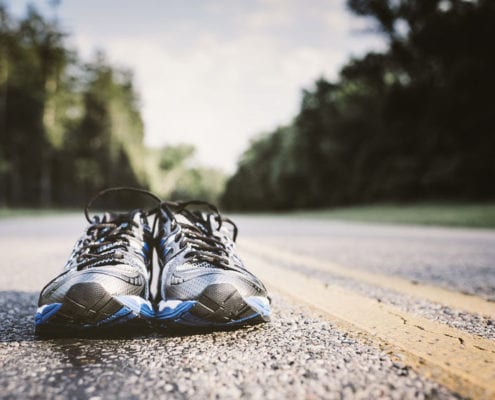Out with the old, in with the new. Separating with your trusty pair of running shoes can be traumatic. You have covered lots of ground together and they have always been there for you. Sadly there is a time when you will need to retire them and bring in the new guy. Below are some tips on when you know it is time to retire, and how to break in your new shoes for many more miles of running bliss.
How to Test Your Old Running Shoes
Count Your Miles
Typical running shoes have a lifespan of around 300-500 miles, while some lightweight shoes have as little as 250-300 miles.
Keep track of when you start putting miles on a pair of shoes so you can be on the lookout for changes in foot strike and any pains that may be associated with worn-out shoes.
Visual Checks
When shoes are wearing out sometimes, the insoles will become loose. This can cause rubbing and blisters and is also a sign that your foot is slipping around inside the shoe.
The tread on the bottom. Look at the bottom of your shoe for a wear pattern. See spots that are wearing down? While this is not a fore sure sign to replace it is a good gauge of life left in the shoe. Obviously, if there is a hole in the bottom – it is time to replace.
The top. A hole here or there is fine but if your big toe is sticking out feeling the breeze, consider that pair a goner.
Tired Legs
This one can be hard, because whose legs are not tired after a long run. But having your legs feel more tired than usual may be more on your shoes than on you. Take this as a sign to buy new running shoes and start breaking them in so that you do not find your self with time in between.
Breaking In New Shoes
Give Them Time
Plan some time to break in your new shoes. They are not going to be ready to go out of the box.
Date Them
In a place where it will not rub off, write with a permanent marker the date you start running in your shoes.
Wear Thick Socks
Wearing an extra pair or thicker socks can help break in the shoe from being stiff.
Short and Sweet
Keep your first runs under 6 miles. Remember, if you feel any discomfort shut down the run, not worth risking a long-term injury by running in shoes that are not ready.
Have a Race Day Pair Ready
Buy a new pair of shoes 3 or 4 long runs out from race day. Break them in and then box them up. You will rest easy knowing that you have a pair of shoes that will be run ready on race day.





